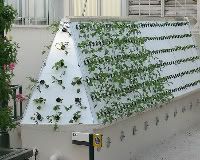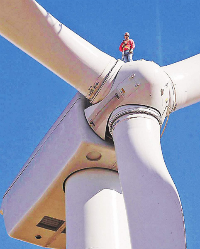I just interviewed Jerry Taylor of the Cato Institute for my next book, Renewable Energy – Following the Money. This was a wonderfully engaging talk of about 90 minutes with a brilliant person, which I have time only to summarize here.
In one way, I can say that there were no real surprises. Jerry calmly explained that clean energy either becomes affordable, and capitalists invest, or it’s not, and it sits on the sidelines. And given the fact that Cato’s mission statement is the forwarding of Libertarianism, how can anyone be shocked by that position?
The interesting part, of course, whether you’re a Libertarian or a Communist, is understanding the damage that fossil fuels are doing, and using government protection of the people to step in and make a difference. Libertarians believe in minimal government, though they acknowledge its role in protecting individual’s rights. E.g., I have no more right to pollute the air over your house than I do to throw my garbage in your front yard.
So, with all this philosophic agreement in place, why is the Cato Institute so bearish on renewable energy? First, it’s about pinning down the damage. They seem to believe that the externalities of oil and coal are minimal, as compared to most of the reports I’ve read. Jerry says, for instance, that the recent report from the Harvard Medical School estimating the health and environmental damage of oil and coal at $700 billion annually was “a bad study.” Also, though he acknowledges that industrial activities are causing global climate change, he thinks that the effects of this will be minimal, and not felt until far in the future. In addition, he finds it even harder to know who is benefiting and who is suffering.
Really? Do we have to split hairs here? What’s the matter with looking at this and concluding the obvious, like the oil companies are the most profitable industry on Earth, and the other seven billion of us are suffering. Not so fast, says Jerry. The developing countries near the equator are likely to be hit hardest by global warming, but they have also benefited the most from industrialization.
I don’t know, Jerry. I enjoyed the conversation, but this sounds like sophistry to me.








